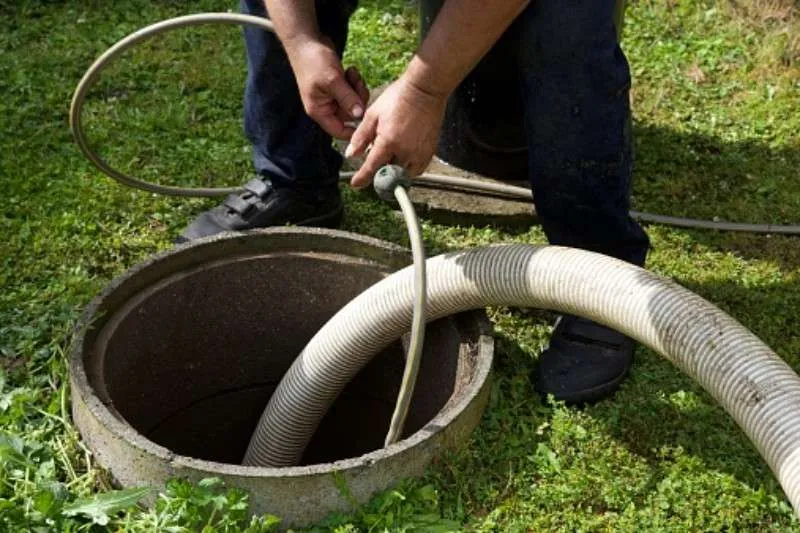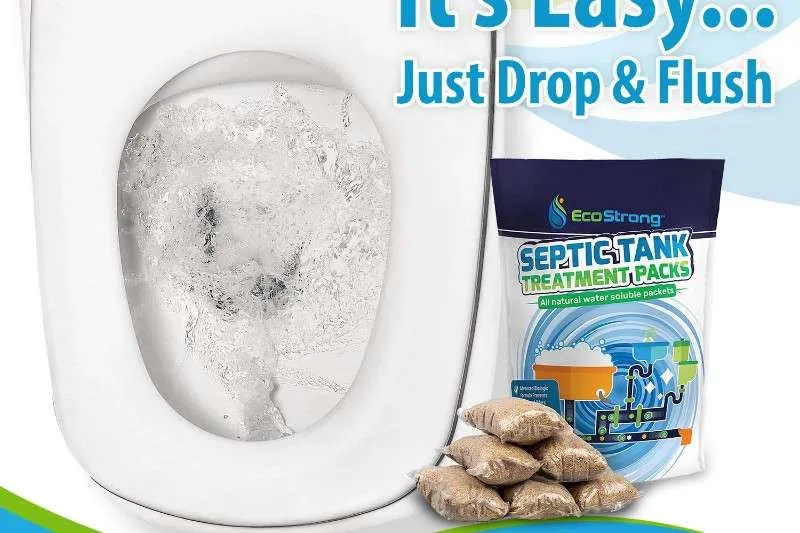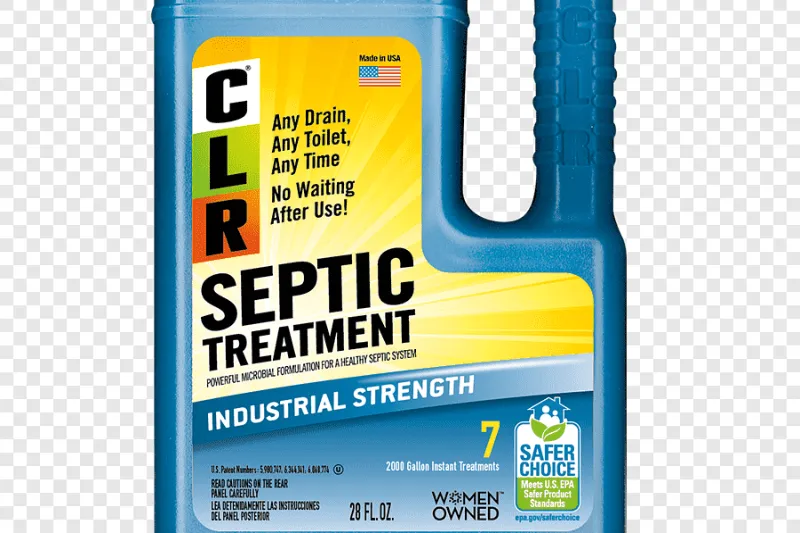Are you unsure about the safety of using CLR for a septic tank? If so, you’re not alone! Many are uncertain how strong chemicals like CLR will interact with their home’s plumbing system. Understanding these products is essential to ensuring your septic tank remains safe and healthy.
We’ll discuss CLR, its intended uses, and whether or not it’s safe for your clr healthy septic system. By the end of this post, you can be confident in knowing if CLR is right for your home’s plumbing needs.
Introduction to Septic Systems: Basic Overview and Functioning

A septic system is a complex network of components used to collect, treat, and store waste generated in the home. It begins with the sewer line, which carries wastewater from your home to an underground tank. This tank is the start of the process as it contains
healthy bacteria necessary for breaking down solid organic waste matter in the wastewater. From there, wastewater flows into a drainage field where soil filters out any remaining impurities or pathogens before releasing clean water into the environment.
Septic systems require regular maintenance to ensure they function properly. If not cared for correctly, problems such as blockages and overflows can lead to costly repairs. To prevent this, homeowners must stay on top of their septic system operating, including cleaning, pumping, and monitoring the bacteria levels in the tank.
CLR is a cleaner produced by Jelmar that uses a patented stabilization process to create a powerful but safe cleaning solution. The main ingredient in CLR is calcium lime and rust remover or CL-R.
The CL-R in CLR is designed to remove tough stains from surfaces like concrete and glass, but it’s also effective on other materials
What is CLR: A Brief Introduction to the Product

CLR is a popular household product used to clean and remove buildup on various surfaces. It’s made from an active ingredient called hydrochloric acid, which has strong cleaning properties. CLR can clean sinks, showers, bathtubs, and more. The product comes in several forms, including liquid, gel, or powder form, depending on the type of surface being cleaned.
When using CLR for any purpose, it’s important to read the instructions carefully, as each form has different directions for application. It’s also important to use protective gear while using the product, such as safety glasses and gloves, since hydrochloric acid can be dangerous if not handled correctly.
Can CLR be Used in Septic Systems? What the Manufacturer Claims
According to the manufacturer, CLR is not designed for septic systems. The product contains hydrochloric acid, which can harm active bacteria and other microorganisms necessary for breaking down stubborn organic matter in wastewater. The product’s directions do not include safely using it in a septic tank.
Using CLR in a septic system can cause blockages or overflows, leading to costly repairs and potentially damaging the environment. For these reasons, it’s best to avoid using CLR or other harsh chemicals in your septic system if possible. Instead, opt for natural cleaning agents such as baking soda or vinegar that are safer and more effective when used properly.
The Risks of Using Harsh Chemicals in Septic Systems
- Damage to the septic tank’s bacteria colonies: The hydrochloric acid in CLR can kill off beneficial bacteria attached to break down organic matter in wastewater which could lead to clogs and backups.
- Corrosion of metal components: Hydrochloric acid is known to corrode metal pipes and other components found in a septic system over time, leading to leaks and potential damage.
- Blockages in the lines: Harsh chemicals like CLR can build up on the walls of your pipes, causing blockages that will lead to costly repairs or replacements.
- Overflows due to increased pressure: Too much buildup from harsh chemicals can increase the pressure within your septic system leading to overflows.
- Contamination of the environment: Overflows can contaminate nearby water sources leading to environmental damage.
- Health risks to humans and animals: The chemicals present in CLR can be hazardous if ingested or inhaled, posing health risks for humans and animals in the area.
- Damage to your property: Overflows due to blockages caused by harsh chemicals can cause extensive damage to your property, with costly repairs or replacements necessary.
- Costly repairs and replacements: Using harsh chemicals like CLR in a septic system will eventually lead to expensive repair bills and possible parts replacement over time.
Ingredients in CLR: Are They Safe for Septic Systems?
CLR is made up of a variety of chemicals and compounds, including hydrochloric acid, sodium hydroxide, and surfactants. Hydrochloric acid is the most concerning of these ingredients as it can be hazardous to your septic system’s bacteria colony. The other ingredients are typically safe, but too much can cause blockages in the lines leading to overflows or backups.
For these reasons, it’s best to avoid using CLR in your septic system if possible. Instead, opt for natural cleaning agents that are safer and more effective when used properly, such as baking soda or vinegar. These products will not damage the bacteria colonies or corrode metal components like CLR can and are much cheaper than harsh chemicals.
It’s also important to remember that while CLR can be effective in some cases, it is not designed for septic systems and should only be used as a last resort if all other options have failed. It’s always best to consult a professional before using any product in your septic system to ensure it won’t cause any harm.
Alternatives to CLR: Other Safe Cleaning Products for Septic Systems
In general, it’s best to avoid using harsh chemicals like CLR in a septic system if possible. Instead, opt for natural cleaning agents such as baking soda or vinegar that are safer and more effective when used properly.
- Baking Soda: Baking soda is an excellent natural cleaner safe on most surfaces, including those in your septic tank. It can dissolve grease and other organic matter without damaging the bacteria colonies necessary for breaking down waste.
- Vinegar: Vinegar is another natural cleaner that works well on tough stains and can help reduce odors without causing any damage to your septic system.
- Enzymatic Cleaners: Enzymatic cleaners contain beneficial bacteria strains that help break down organic matter and keep your septic system running at peak efficiency. These are a great alternative to harsh chemicals as they don’t damage the bacteria colonies or corrode metal components.
- Biodegradable Detergents: Biodegradable detergents are specially formulated to be safe for septic tanks. They effectively clean surfaces without damaging them and contain no harsh chemicals that could harm your tank.
Using natural cleaners such as baking soda, vinegar, enzymes, or biodegradable detergents, you can safely maintain your septic tank without causing any damage or increasing the risk of backups or overflows.
Best Practices for Maintaining Septic Systems: Tips for Keeping Your System Healthy
Maintaining a clr healthy septic system is essential for protecting your property and family from the risks posed by backups or overflows. Following simple best practices, you can keep your septic tank in good working order for years.
- Have Regular Inspections: Having a professional inspect your septic system regularly is one of the best ways to ensure it stays in good condition. Any potential problems can be spotted early during these inspections before they become too serious.
- Pump Out Your Tank Regularly: Septic tanks should be pumped out every 3-5 years, depending on usage levels and the size of the tank. This helps remove any built-up waste material that could cause costly damage if left unchecked.
- Avoid Flushing Unfriendly Items: Certain items should never be flushed down the toilet as they can cause damage to your septic system. These include diapers, wipes, feminine hygiene products, and grease or oil.
- Use Natural Cleaning Products: Harsh chemicals such as CLR are not designed for septic systems and can cause serious damage if used improperly. It’s always best to opt for natural cleaning agents like baking soda or vinegar when possible.
Another important part of maintaining healthy dry septic system treatments is not properly.
FAQs
What cleaners should not be used with septic systems?
Harsh chemicals such as bleach, ammonia, and CLR should never be used in a septic system as they can corrode metal components and damage the bacterial colonies necessary for breaking down waste.
Is limescale remover safe for septic tanks?
Limescale remover is generally not recommended for septic tanks as it can cause corrosion and damage to the delicate balance of bacteria necessary for proper waste breakdown. Opting for natural cleaning agents such as baking soda or vinegar is best.
Will calcium chloride hurt my septic system?
Calcium chloride is generally safe for septic systems but should never be used in high concentrations as it can damage metal components and bacterial colonies. It’s best to consult a professional before using chemical cleaners in your septic tank.
What does CLR septic treatment do?
Clr septic system treatment is designed to help break down solid waste in the tank. However, these products are not designed for septic systems and can cause serious damage if used improperly. Opting for natural cleaning agents such as baking soda or vinegar is best.
Is there a drain cleaner safe for septic systems?
Yes, several drain cleaning products are designed specifically for use in septic systems. These include enzymes, bacteria strains, and biodegradable detergents that help break down organic matter without causing corrosion or damage to the bacterial colonies necessary for proper waste breakdown.
How do you use a CLR septic?
CLR septic treatment should never be used in a septic system. These products are not designed for septic systems and can cause serious damage if used improperly. Opting for natural cleaning agents such as baking soda or vinegar is best.
Conclusion
Therefore, the overall verdict comes down to users’ personal preferences. While CLR is considered safe for septic tanks, it’s crucial for anyone using it to read and understand the product label thoroughly. It’s also important to use caution when using any liquid or gas entering a septic system, as misuse could be hazardous over time. It’s also essential to seek guidance from a plumbing professional for any questions or concerns.


